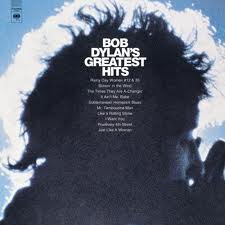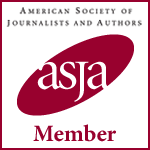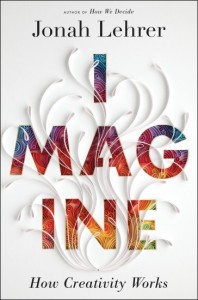 As a working writer, and as a critic, historian, and scholar, I take seriously the issue of plagiarism — the act of passing off someone else’s work as your own. That explains in part my objection to the term “self-plagiarism”: it trivializes a grave offense, the theft of another’s labor and of the rewards due to him or her for it. (To read the first post in this series, click here.)
As a working writer, and as a critic, historian, and scholar, I take seriously the issue of plagiarism — the act of passing off someone else’s work as your own. That explains in part my objection to the term “self-plagiarism”: it trivializes a grave offense, the theft of another’s labor and of the rewards due to him or her for it. (To read the first post in this series, click here.)
I reject the concept also because it muddies the waters. It’s a contradiction in terms, an oxymoron: Passing off your own work as your own. Just exactly what’s wrong with that? Is it even possible? This hardly constitutes “stealing” or “cribbing,” to cite just two of the accusations bandied about in the headline-grabbing case of Jonah Lehrer. Unless forbidden in a contract between publisher and author, the sin involved, if any, surely is much less grievous than plagiarism, nothing more than a peccadillo at worst, often not even that — just a sensible, professionally legitimate recycling of an asset.
 Dancers and choreographers, stage actors and theater directors, musicians and composers, graphic artists and photographers, and most other creative professionals hone performances and/or works that they then repeat multiple times for diverse audiences in an assortment of formats. Sometimes those repetitions will hew closely to a single interpretation (a particular symphony orchestra’s rendition of a Wagner overture); sometimes variation gets built into the work itself (John Cage’s scores, with their aleatory components); sometimes differences, even extreme ones, will result from the evolution of the performer’s thinking about the piece (Ornette Coleman’s “Lonely Woman” on any given night).
Dancers and choreographers, stage actors and theater directors, musicians and composers, graphic artists and photographers, and most other creative professionals hone performances and/or works that they then repeat multiple times for diverse audiences in an assortment of formats. Sometimes those repetitions will hew closely to a single interpretation (a particular symphony orchestra’s rendition of a Wagner overture); sometimes variation gets built into the work itself (John Cage’s scores, with their aleatory components); sometimes differences, even extreme ones, will result from the evolution of the performer’s thinking about the piece (Ornette Coleman’s “Lonely Woman” on any given night).
All these situations have in common the premise that creative professionals build up backlogs of their output — sometimes called repertoire/repertory, sometimes inventory, sometimes backlist, sometimes stock — on which they draw, legitimately, again and again. Think of Aaron Siskind’s variant prints of his Martha’s Vineyard images. Even painters and sculptors, makers of presumably one-of-a-kind works, frequently produce series in which they explore variations on a theme, not to mention editioned works. In short, no one expects them to present entirely new material in entirely new renditions every time.
Writers have become the exception, though this is a relatively new phenomenon; and the demand for “only new material” comes from the publishing industry, not from readers. Most of Charles Dickens’s novels were first serialized in periodicals before he assembled them (often with minimal revision) into complete books. The majority of his readers at the time knew this, as of course did the publishers of the magazines involved and the resulting books. No ethical issues occurred to any of those parties.
Subsequent editions of Dickens’s books may or may not indicate their original method of dissemination, and present-day readers may not know of it. Yet I have never met a Dickens reader who felt disappointed in advance to learn that any book of his had appeared first in serial form, nor any reader unaware of that who felt betrayed when discovering it after the fact.
 Writers since Dickens have published chapters of their novels-in-progress in literary magazines, gathered and sometimes rewritten separately published short stories into collections thereof (Sherwood Anderson’s Winesburg, Ohio), turned published short stories into novellas and novels and plays and screenplays. Similarly, most of those of us who generate ratiocinative prose in the form of essays and books and lectures look for diverse ways to put our IP to good use, both to maximize our financial return from those efforts and to expand the readership thereof. In my previous post, I cited Roland Barthes (Mythologies) and Susan Sontag (On Photography) as instances. I can point to hundreds more; you’ll find a batch by casual browsing in any good bookstore.
Writers since Dickens have published chapters of their novels-in-progress in literary magazines, gathered and sometimes rewritten separately published short stories into collections thereof (Sherwood Anderson’s Winesburg, Ohio), turned published short stories into novellas and novels and plays and screenplays. Similarly, most of those of us who generate ratiocinative prose in the form of essays and books and lectures look for diverse ways to put our IP to good use, both to maximize our financial return from those efforts and to expand the readership thereof. In my previous post, I cited Roland Barthes (Mythologies) and Susan Sontag (On Photography) as instances. I can point to hundreds more; you’ll find a batch by casual browsing in any good bookstore.
 Such repurposing is not only endorsed by the copyright law, with its recognition of the practice of subsidiary-rights licensing, but is survival-positive and often necessary for independent maker of intellectual property — certainly those whose first licensings of rights don’t command untypically high fees. Every professional writers’ organization to which I have belonged — PEN American Center, the Authors Guild, the National Writers Union, the American Society of Journalists and Authors — endorses this practice and advocates it energetically to their memberships.
Such repurposing is not only endorsed by the copyright law, with its recognition of the practice of subsidiary-rights licensing, but is survival-positive and often necessary for independent maker of intellectual property — certainly those whose first licensings of rights don’t command untypically high fees. Every professional writers’ organization to which I have belonged — PEN American Center, the Authors Guild, the National Writers Union, the American Society of Journalists and Authors — endorses this practice and advocates it energetically to their memberships.
Nothing at all newsworthy here, and certainly nothing unscrupulous. Truth be told, putting aside the fatuous indignation of commentators like Josh Levin at Slate and Joe Coscarelli at New York in the currently high-profile case of Jonah Lehrer, this is SOP, going back at least to the days of Dickens if not before him. As Susan Sontag herself once wrote, in a very different context, “To be scandalized by the normal is always demagogic.”
(Worth pointing out that this line comes from an essay published by Sontag in the New York Times in 1976, “Notes on Art, Sex and Politics,” the introduction to which states forthrightly, “The following excerpts are taken from an interview which appeared in the Fall 1975/Winter 1976 issue of Salmagundi, a quarterly magazine published by Skidmore College.” So Sontag repurposed comments made during a recorded and previously published q&a into an essay. Where were the self-plagiarism police then, and how could they have let that happen?)
Furthermore, trendy postmodernist theory proposes that there’s no originality in any case, that all ideas are inherently recycled, and celebrates “transgressivity,” while Jacques Derrida asserted that to quote was to make something new — all notions that, I’ll wager, none of the people presently berating Jonah Lehrer has challenged or contradicted, and to which some of them, I’m sure, have agreed. Doesn’t that seem just a teensy bit hypocritical? (I note with interest that no one from the mashup/remix-culture crowd has leaped to Lehrer’s defense. You’d think that Larry Lessig would be all over this one, no?)
•
I come to this standpoint from several different perspectives. First, as a working writer I’ve repurposed my own output in a variety of ways since the beginning of my professional practice in 1967, accepting the Edmund Wilson model as a survival strategy appropriate to the life of the freelance critic. So I undertake new assignments and self-supported projects with an eye toward the way(s) in which I can multipurpose the results. I also regularly revisit my inventory of writings to develop ways of repurposing existing texts. Lectures become articles, articles become lectures, short articles combine to form longer ones, clusters of articles become books, and so forth.
I’ve never tricked an editor into unknowingly presenting previously published material, nor breached a contract that required me to provide a previously unpublished text. With the active collaboration of numerous editors and publishers, however, I have on many occasions repackaged existing material for republication, either exactly as originally published or with revisions. Sometimes editors and publishers have considered it necessary, or desirable, to inform readers of this fact; sometimes that hasn’t been “house style.” Either way is fine with me. I tell you this not confessionally and under duress but voluntarily, and unapologetically. Since, as an IP maker, I have fought to retain copyright and subsidiary rights to all my work, I have every legal right to do this, and consider it perfectly appropriate to bring any part of my output before an enlarged audience.
 Second, as a professional writer I’ve taught seminars in copyright law, contract negotiation, subsidiary-rights licensing, and self-syndication for the National Writers Union, the International Association of Critics of Art, and other sponsors. In that capacity I’ve encouraged other writers to multipurpose their outputs, and to fight to retain their own copyright and subsidiary rights for those purposes.
Second, as a professional writer I’ve taught seminars in copyright law, contract negotiation, subsidiary-rights licensing, and self-syndication for the National Writers Union, the International Association of Critics of Art, and other sponsors. In that capacity I’ve encouraged other writers to multipurpose their outputs, and to fight to retain their own copyright and subsidiary rights for those purposes.
Third, perhaps because I did study English literature in an academic setting, I insist on footnoting or otherwise sourcing every direct quote from or paraphrase of others that appears in my writing (at least by providing the author’s name and title of the work, if I can recall or locate it), and I expect the same in return. Reviewers of my books of essays have remarked, sometimes with irritation, on my insistence on including bibliographic information and notes on the origins and earlier versions of those essays. (I do this not compulsively, nor in the interest of “full disclosure,” but for the benefit of those few readers who may want to trace the genesis and evolution of an idea in my writings, or may need to reconcile a quotation from one source with a variant thereof from another.) However, in cases that involve inclusion of a published essay of mine in a book that incorporates materials by other people as well, or the reappearance of a prior text of mine in a different periodical, indication of a text’s earlier history often depends on the editors’ and publishers’ preferences, and I leave that to their judgment.
 From that crossroads, and with that background of professional experience, I view the term “self-plagiarism” as an oxymoron, and a misnomer. It denotes the commission of an intellectual crime, and indeed a legal one, as well as an ethical breach, where an author most likely has committed none of those offenses. Use of it as a blanket term to paint any and all such repurposing as acts of bad faith that somehow cheat editors, publishers, readers, and one’s fellow professionals only brands the accusers as self-righteous know-nothings while demonstrating a deeply unprofessional failure to research standard practices in the field.
From that crossroads, and with that background of professional experience, I view the term “self-plagiarism” as an oxymoron, and a misnomer. It denotes the commission of an intellectual crime, and indeed a legal one, as well as an ethical breach, where an author most likely has committed none of those offenses. Use of it as a blanket term to paint any and all such repurposing as acts of bad faith that somehow cheat editors, publishers, readers, and one’s fellow professionals only brands the accusers as self-righteous know-nothings while demonstrating a deeply unprofessional failure to research standard practices in the field.
Creating reader suspicion of republished material and the act of republishing it as somehow tricky, devious, inappropriate, and unethical on general principles ill serves publishers, writers, and readers alike. Which doesn’t mean that I hold Jonah Lehrer blameless in relation to the mess he’s gotten himself into, or think his punishment overly harsh. I’ll go into precisely what he did wrong, his acts of bad judgment and bad faith (and possible contractual violations), in my next post.
•
This post supported by a donation from the Estate of Lyle Bongé.
•
 Special offer: If you want me to either continue pursuing a particular subject or give you a break and (for one post) write on a topic — my choice — other than the current main story, make a donation of $50 via the PayPal widget below, indicating your preference in a note accompanying your donation. I’ll credit you as that new post’s sponsor, and link to a website of your choosing. Include a note with your snail-mail address (or email it to me separately) for a free signed copy of my 1995 book Critical Focus!
Special offer: If you want me to either continue pursuing a particular subject or give you a break and (for one post) write on a topic — my choice — other than the current main story, make a donation of $50 via the PayPal widget below, indicating your preference in a note accompanying your donation. I’ll credit you as that new post’s sponsor, and link to a website of your choosing. Include a note with your snail-mail address (or email it to me separately) for a free signed copy of my 1995 book Critical Focus!
 As a bonus, I’ll include a copy of The Silent Strength of Liu Xia, the catalog of the 2012-13 touring exhibition of photos by the dissident Chinese photographer, artist, and poet, currently in her sixth year of extralegal house arrest in Beijing. The only publication of her photographic work, it includes all 26 images in the exhibition, plus another 14 from the same series, along with essays by Guy Sorman, Andrew Nathan, and Cui Weiping, professor at the Beijing Film Academy.
As a bonus, I’ll include a copy of The Silent Strength of Liu Xia, the catalog of the 2012-13 touring exhibition of photos by the dissident Chinese photographer, artist, and poet, currently in her sixth year of extralegal house arrest in Beijing. The only publication of her photographic work, it includes all 26 images in the exhibition, plus another 14 from the same series, along with essays by Guy Sorman, Andrew Nathan, and Cui Weiping, professor at the Beijing Film Academy.








I am almost entirely inclined to agree, Allan, while stipulating one exception (which I have, though not often, encountered). If a student submits a paper in an academic course that was previously submitted for another course, and the re-submission is not disclosed, this is considered academic dishonesty, and I’ve heard it referred to “self-plagiarism.” But in my experience it’s rare, and usually easily spotted as “something’s wrong here.” But your analysis in the context of professional writers makes good sense to me.
We have good pedagogical reasons for requiring students to produce new work in each course they take. We assume, usually correctly, that they need practice to hone their skills at researching, organizing, thinking, and writing. Those abilities won’t get advanced if students recycle the same work among different faculty members in different courses. But we can use the existing, commonly understood word “recycling” for that prohibition. I’ll explore this issue in the next post in this series.